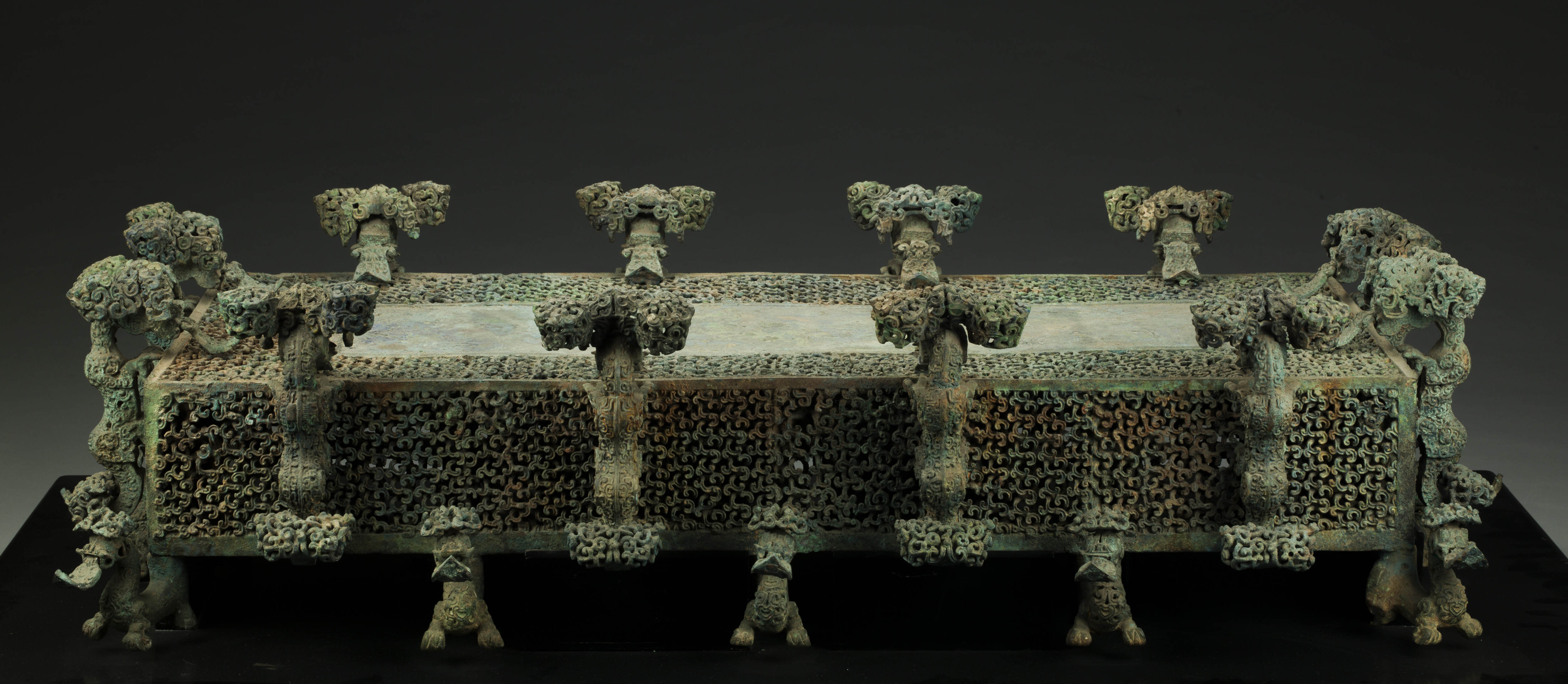Date: Spring and Autumn Period (770-476 BC)
Provenance: Excavated from tomb No 2, Xiasi, Xichuan, Henan province, 1978
Measurements: Height: 29 cm, Length: 131 cm, Width: 68 cm
The Jin was a table for holding wine vessels in ancient China. Rectangular in shape with a central panel, the table features openwork layered cloud designs along its borders and four sides. Twelve dragon-shaped beasts, with tongues sticking out and arched bodies, adorn the edges of the table, serving both as decorative elements and as supports for the table itself.
The table's ingenious design, elegant shape, and exquisite openwork contribute to its reputation as a flawless artistic treasure. Crafted using the lost-wax technology, a method to cast more intricately detailed products by overcoming the limitations of the clay piece-mold process, the table showcases the beauties of openwork and sculpture.
The adoption of lost-wax casting marked a significant advancement in China's bronze casting technology. This jin is the earliest known example of lost-wax technology in China to date. Its discovery redefines the timeline of China's use of the lost-wax technique, pushing it back over a hundred years earlier than previously believed.

